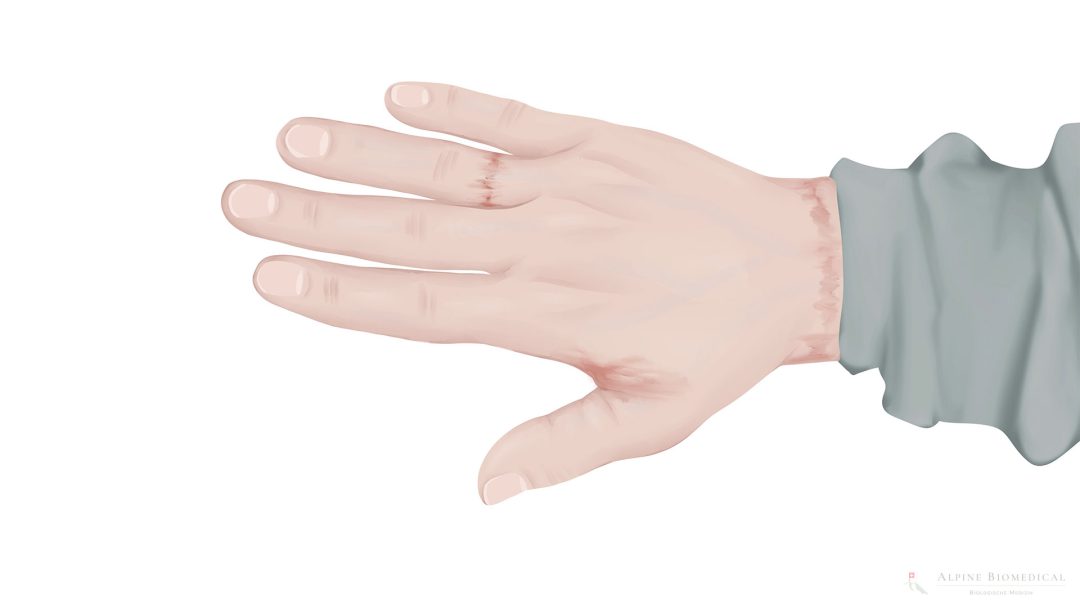Nickel Allergy

Nickel allergy is an allergy to nickel that becomes apparent through direct contact with nickel. Skin contact with objects containing nickel results in an allergic reaction with redness, itching, swelling and sometimes blisters.
Symptoms often do not appear immediately upon contact, but rather with a delay of one to three days. This is because it is a late-type allergy, in contrast to, for example, a house dust allergy, where an allergic reaction occurs immediately.
What is nickel?
Nickel is a silvery metal that is added to various alloys to prevent rusting. It is often used in stainless steel and is contained in many metallic objects. Nickel is an essential heavy metal and is necessary for the body in small quantities and in a biologically correct form. When incorporated into alloys and when in contact with the skin, nickel can cause an allergic reaction and pose an immunological problem for those affected. The allergic effect increases particularly when there is contact with sweaty skin and leads to the classic symptoms of a contact allergy.
Nickel can not only pose an immunological problem, but is also questionable from a toxicological point of view. Amounts of 50 mg or more can affect the human organism and promote the development of cancer.
Nickel is often found in costume jewelry, belts or piercings. Consuming nickel, which is found in large quantities in legumes or whole grain products, can also be problematic.
Symptoms of nickel allergy
A nickel allergy can be recognised by the fact that a skin change occurs at the points of contact with the metal. For example, jewelry, piercings, belt buckles, buttons on clothing, eyeglass frames or watches can cause irritation of the skin. However, dentures can also contain nickel and cause an allergic reaction in the mucous membrane.
The symptoms are:
- Redness and swelling
- Itching, burning and pain
- Formation of weeping blisters
- Scaling skin
- Tiredness and fatigue
- Headaches
- Muscle and joint pain
Frequency of nickel allergy
Approximately 15% of the population is affected by a nickel allergy. In most cases, the symptoms are limited to the skin. However, some of those affected develop pronounced systemic symptoms and chronic inflammatory diseases. In such cases, the intake of nickel through food must also be taken into account.
Treatment of a nickel allergy
The most important thing is to stop coming in contact with nickel as much as possible. In many cases, this can reduce the threshold to such an extent that the symptoms are no longer noticeable. For people with a severe nickel allergy, other hidden sources of nickel should also be uncovered and avoided. Diet is a source of nickel and can cause chronic symptoms in those affected.
Various vegetable oils of poor quality, nut shells, grains, fruits and vegetables can contain increased amounts of nickel. The cookware should also be taken into account because nickel ions can also be released into the food from there.
Creams containing cortisone can provide short-term local benefits for the skin, but these should only be used sparingly.
A cause-focused, long-term approach to nickel sensitivity is to adjust the imbalances in the body.
- Intestinal cleansing can help bring the immune system into balance
- Hidden inflammation (silent inflammation) confuses the immune system. These should be diagnosed and removed. For example, jaw inflammation, such as NICO / FDOK are some hidden inflammations that may go unnoticed.
- Hidden micronutrient deficiencies and metabolic disorders should be diagnosed and treated.
- Toxic loads should be controlled and the body detoxified.
Med. pract. Dana Hreus M.A.
A nickel allergy should be considered from an immunological and toxicological perspective. With the help of solid diagnostics, the causes of the physical imbalance can be treated.

Further information
The information listed contains relevant topics and serves to improve understanding.